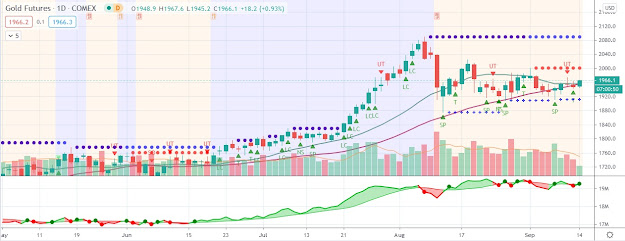Several economic data points in the U.S. are likely to impact the direction of the gold price
The gold price moved slightly lower Monday morning, by $3.43, or 0.2%, to $1,652.87 per ounce. The spot price of gold fell to an overnight low of $1,642.36, but rebounded as the U.S. dollar pared its gains against a basket of foreign currencies. The gold price held firm despite a better than expected report on U.S. retail sales, which increased 0.8% in March – above the 0.3% consensus estimate among economists.
Looking to the upcoming week, several economic data points in the U.S. are likely to impact the direction of the gold price. In addition to this morning’s Retail Sales report, the Empire Manufacturing data for April will be announced on Monday. Thursday’s schedule includes Weekly Jobless Claims, Existing Home Sales, the Philadelphia Fed Index, and a report on Leading Indicators.
Investors will also be keeping a close eye on Europe – particularly in Spain – where financial markets have come under significant pressure in recent weeks. Credit default swaps on Spanish sovereign debt surged to a new record high last week, and the nation’s ten-year yield approached 6%. Brian Barry, an analyst at Investec Bank Plc in London, commented that “Spain is viewed as the next most likely to be in need of a financing program. It’s not surprising to see CDS widening.”
While the deflationary impact of Spain’s struggles could lead to widespread liquidation in financial markets and serve as a headwind for the price of gold, history suggests that policymakers will not sit idly by. Instead, euro zone officials have on numerous occasions in recent years responded by boosting liquidity measures and/or printing money to combat the sovereign debt crisis – the effects of which have been largely positive for gold prices.
Looking to the upcoming week, several economic data points in the U.S. are likely to impact the direction of the gold price. In addition to this morning’s Retail Sales report, the Empire Manufacturing data for April will be announced on Monday. Thursday’s schedule includes Weekly Jobless Claims, Existing Home Sales, the Philadelphia Fed Index, and a report on Leading Indicators.
Investors will also be keeping a close eye on Europe – particularly in Spain – where financial markets have come under significant pressure in recent weeks. Credit default swaps on Spanish sovereign debt surged to a new record high last week, and the nation’s ten-year yield approached 6%. Brian Barry, an analyst at Investec Bank Plc in London, commented that “Spain is viewed as the next most likely to be in need of a financing program. It’s not surprising to see CDS widening.”
While the deflationary impact of Spain’s struggles could lead to widespread liquidation in financial markets and serve as a headwind for the price of gold, history suggests that policymakers will not sit idly by. Instead, euro zone officials have on numerous occasions in recent years responded by boosting liquidity measures and/or printing money to combat the sovereign debt crisis – the effects of which have been largely positive for gold prices.




Comments
Post a Comment